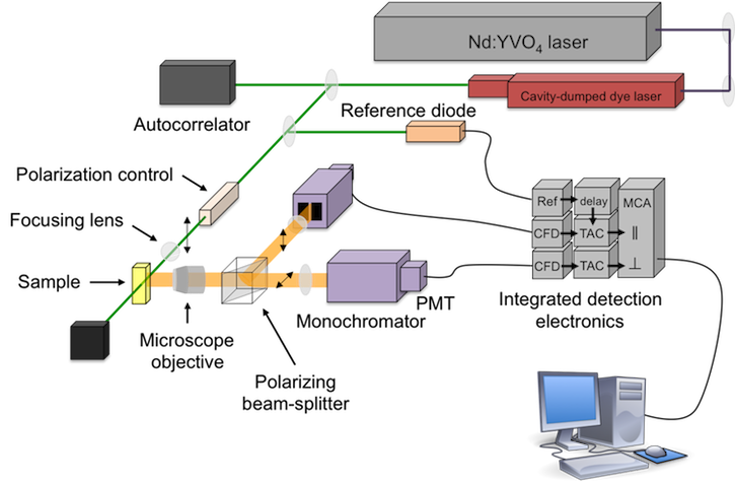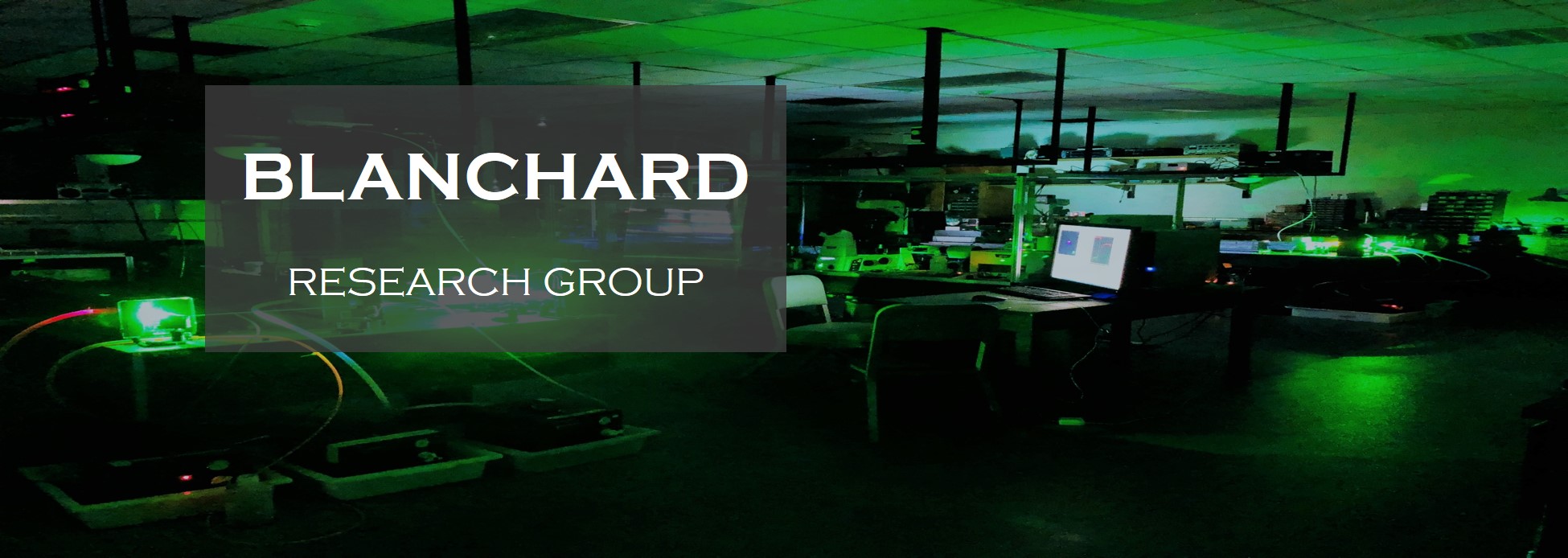TCSPC
PUMP-PROBE
TCSPC-CSM
Observing
the local environment
Observing energy
transfer using
Observing molecular
scale organization
of
a molecular probe
pump-probe
spectroscopy
and interactions
[Learn
more]
[Learn
more]
[Learn more]
FRAP
LANGMUIR-BLODGETT TROUGH
Observing translation
diffusion
and
Forming monomolecular films and
monitoring
mobility of probe
molecules and
films
film formation and deposition
[Learn more]
[Learn
more]
|
TIME
CORRELATED SINGLE PHOTON COUNTING INSTRUMENT

|
| Schematic of the time-correlated single photon counting
(TCSPC) instrument, showing source beam (green), sample
(yellow), and detection components. |
TIME-RESOLVED
FLUORESCENCE MEASUREMENTS
Fluorescence
lifetime and anisotropy decay data are acquired using a
time-correlated single photon counting (TCSPC) instrument.
The light source for this instrument is a synchronously
pumped cavity dumped dye laser excited by the output of a
passively mode locked Nd:YVO4 laser. The source laser
produces 13 ps pulses at 80 MHz repetition rate. The dye
laser is cavity dumped to control the repetition rate. The
dye laser output can be turned from 430 to 850 nm
depending on the dye and optics used and the excitation
wavelength.
The fundamental excitation pulse from the dye laser is
divided, with one portion of the pulse directed to a
reference photodiode and the other portion directed to the
sample.
Emission is collected using a 40x reflecting microscope
objective. The colected emission is separated into
polarization components parallel and perpendicular to the
vertically polarized excitation pulse using a polarizing
cube beam splitter. The parallel and perpendicular
polarized signal components are detected simultaneously
using microchannel plate photomultiplier tubes (PMT), each
equipped with a subtractive double monochromator for
wavelength selection.
The detection electronics resolve the parallel and
perpendicular transients separately. The detection
electronics include a time-to-amplitude converter (TAC)
and a constant fraction discriminator (CFD) that
temporally resolves the fluorescence signal for each
polarization component. Data are collected using
multichannel analyzers (MCAs), which are integral
components of the detection electronics.
|
|
|
|

